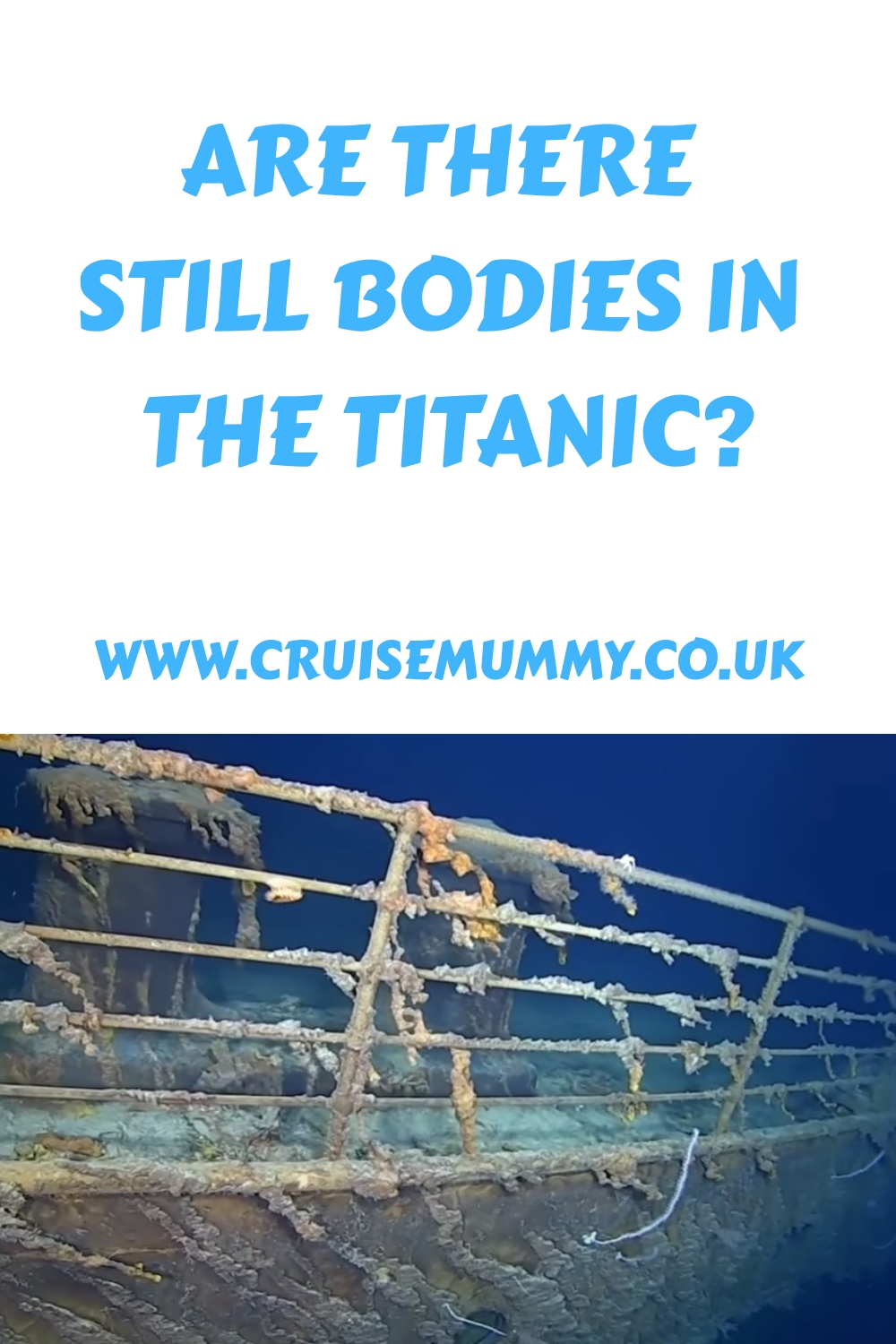After the Titanic sank in 1912, the bodies of many victims were recovered, but many more were lost to the sea.
But what happened to the remains of the unfortunate souls who perished in the Titanic wreck? Are the bodies still there? And can they be seen by those who visit the wreckage in submarines?
This article explains…
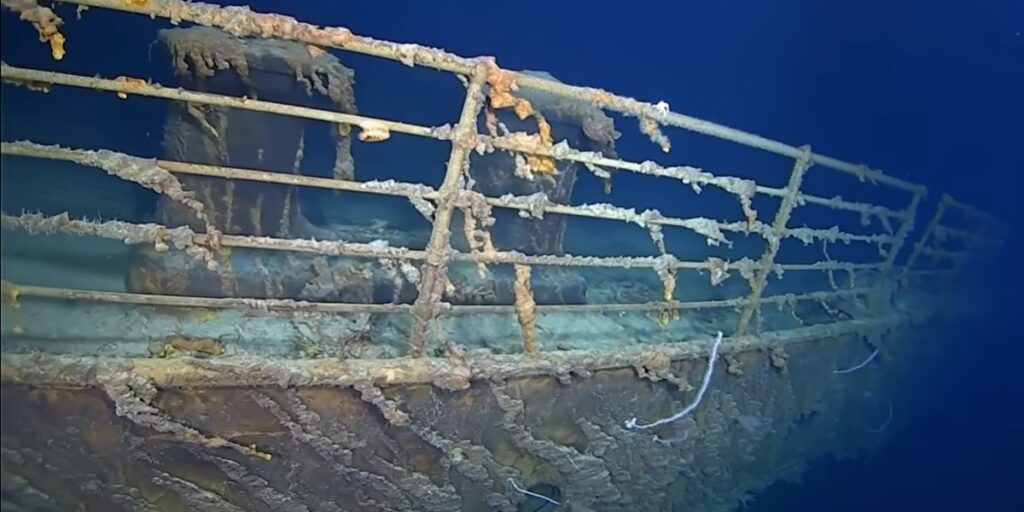
No intact human bodies or skeletons remain in the Titanic wreckage
The wreck was first located and explored in 1985 and no bodies were visible then, or on any of the other times that it has been visited.
Over a century has passed since the ship sank in 1912, and any bodies that were trapped within the wreckage will have decomposed and been consumed by sea life.
Even the ship itself is slowly being consumed by bacteria, fungi, and other microorganisms that are accelerating the degradation of the wreck.
Despite the lack of physical human remains, the site of the Titanic is considered a gravesite out of respect for the over 1,500 people who lost their lives in the disaster.
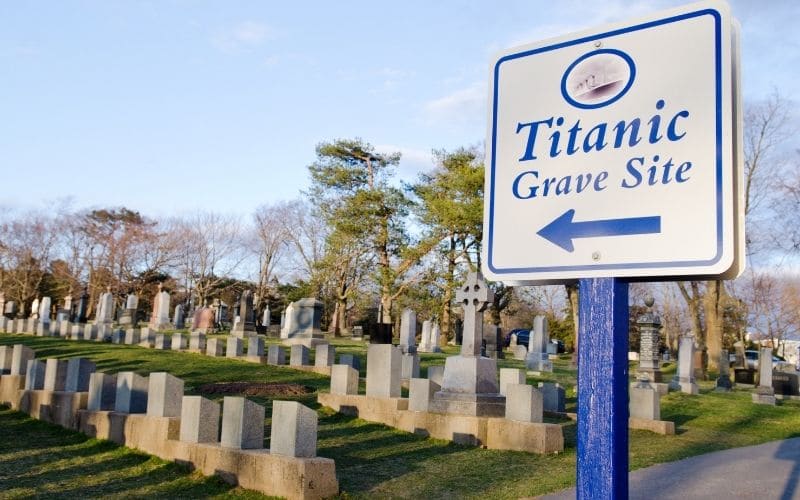
What happened to the bodies on the Titanic
Many bodies went down with the Titanic when it sank. Some drifted away and some would have remained inside the ship. Any bodies that sank to the seafloor would have decomposed over the following months and years.
The exact rate of decomposition in water is influenced by a variety of factors including water temperature, depth, oxygen levels, and marine life activity.
The sinking of the Titanic occurred in the North Atlantic, where the water temperature is typically around 28°F (-2°C), and the ship rests at a depth of about 2.5 miles (4 kilometers), where there is virtually no light and the pressure is extreme.
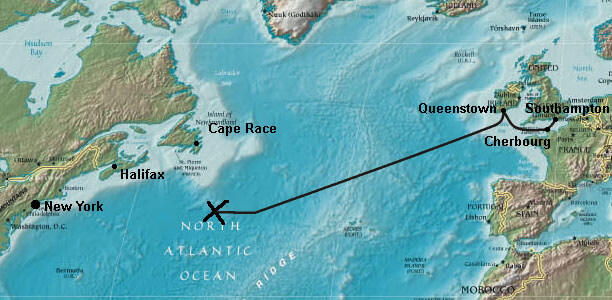
Bodies in the water would have started to decompose slower than usual, due to the cold temperatures.
They would have initially sunk, then potentially floated back to the surface as decomposition gases accumulated, only to sink again once those gases escaped.
Marine scavengers would have quickly started to consume the bodies. While it would have been too cold for larger creatures, such as sharks, the deep waters are inhabited by a multitude of smaller organisms that would have gradually consumed the remains.
These include rat-tails, hagfish, and various types of crustaceans.
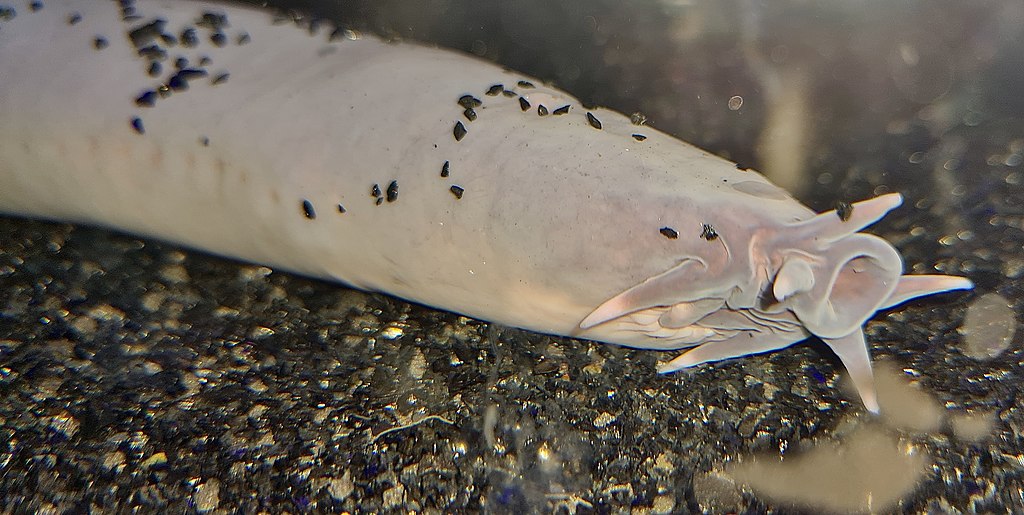
Photo: Bernard DUPONT from FRANCE, CC BY-SA 2.0
In addition to these scavengers, the deep ocean is home to various bacteria and other microorganisms that aid in decomposition. These organisms would have broken down the soft tissues within a few months.
Bones, on the other hand, could have theoretically lasted for years, but they too would eventually decompose due to the action of certain types of osedax, also known as “bone-eating worms,” along with other deep-sea organisms.
It’s difficult to give a definitive timeline for this process as it varies based on numerous factors, but it’s likely that within a few years of the Titanic sinking, no identifiable human remains would have been left.
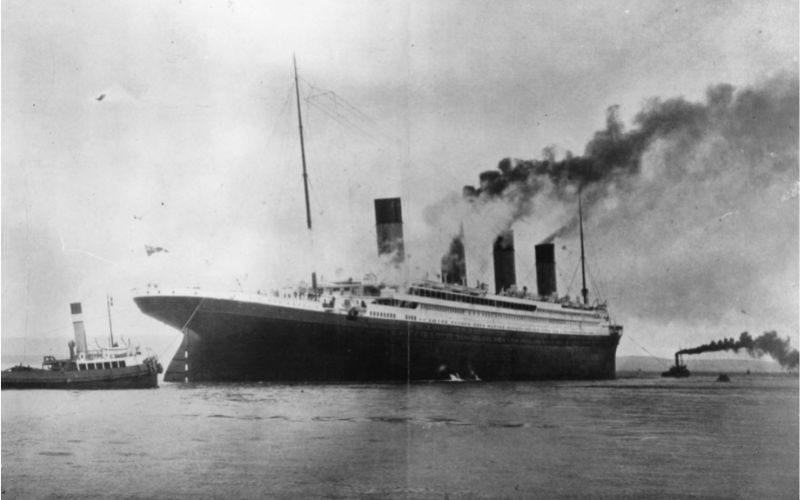
The last body was found in 1912
After the Titanic sank on April 15, 1912, recovery efforts began almost immediately and lasted several weeks. 300 bodies were recovered from the sinking, most within the first month.
The last body to be recovered was that of James McGrady, a cabin steward. His body was found two months after the sinking and then buried in a cemetery in Halifax, Nova Scotia.
What can be seen at the Titanic wreck site
Although no human bodies remain at the Titanic wreck site, parts of the ships and other artefacts are still there.
In addition to the large pieces of the ship, the debris field surrounding the two main parts of the wreck contains hundreds of thousands of items, from parts of the ship (like pieces of coal, china, and metal fixtures) to personal artefacts (like clothing, shoes, and personal belongings). There are also larger items such as boilers and pieces of machinery.
While physical human remains have not been found at the site, it’s important to remember that the site is considered a grave for the people who died in the disaster, and there are international agreements in place to protect it.
Related Posts:
- Will The Titanic Ever Be Raised?
- How Many Cruise Ships Have Sunk?
- What Happens If A Cruise Ship Is Hit By A Rogue Wave?
- Do Cruise Ships Have Enough Lifeboats? No, But Here’s Why That’s OK!

Jenni Fielding is the founder of Cruise Mummy. She has worked in the cruise industry since 2015 and has taken over 30 cruises. Now, she helps over 1 million people per month to plan their perfect cruise holidays.

